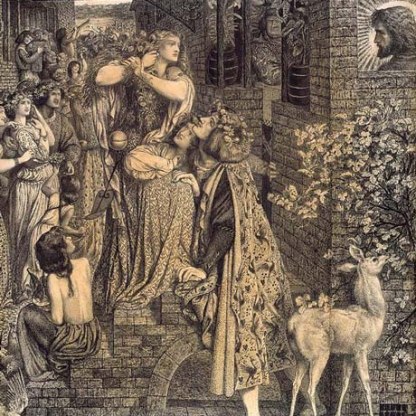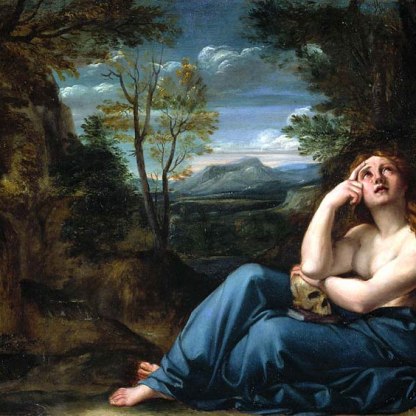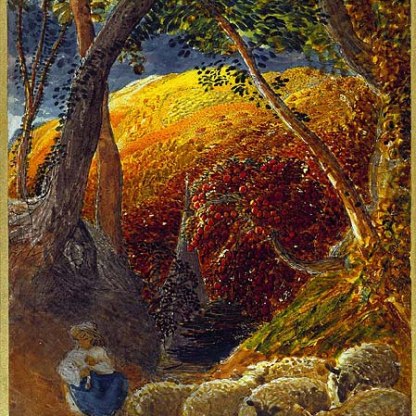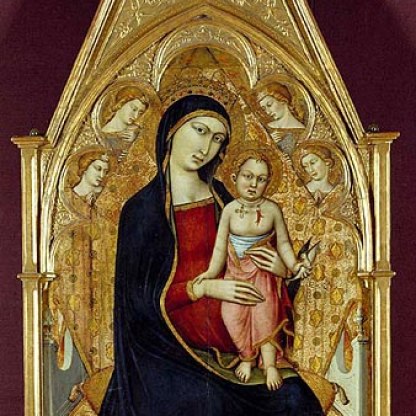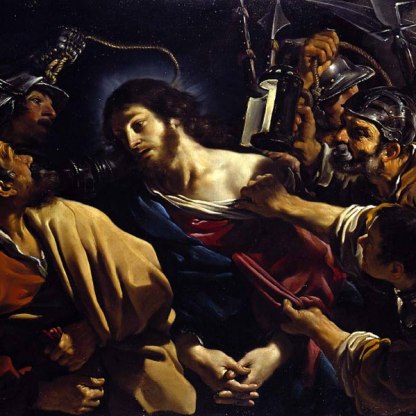Mary Magdalene in a Landscape

Neither clean nor well dressed, with his collar askew, his hat jammed on any old way and his unkempt beard, [he] seemed to be like an ancient philosopher, absent-minded and alone.
This likeable description of the Bolognese painter Annibale Carracci, by an early biographer, suggests that he was a man eminently suited to the portrayal of hermits. Here is a painting of someone who has swapped human society for the solitary contemplation of God, who gazes tearfully towards heaven, her only material possessions a skull and a book. But this solitary saint is no emaciated greybeard. She is a fully fleshed young woman with flowing auburn hair, a topless Renaissance beauty from the same sensuous tradition as Palma Vecchio's Venus 109.
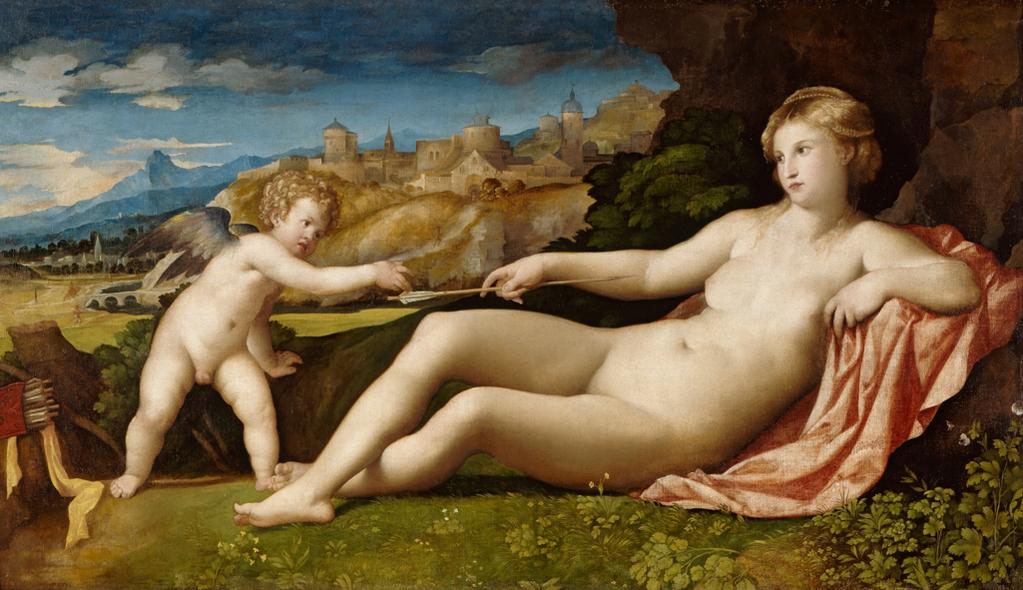
Images of Mary Magdalene weeping tears of repentance in her Provençal retreat were very popular in the sixteenth and seventeenth centuries. Left is a drawing from c. 1592 by the Dutch artist Hendrik Goltzius, from the Fitzwilliam [PD.164-1963], in which the saint appears meditating upon a crucifix in her grotto.
In this period, following the Counter-Reformation, the Catholic Church placed a strong emphasis on the sinner's return to God, and stoutly defended the sacrament of penance against the Protestant reformers. Mary, the former prostitute who became one of Jesus' closest companions, was therefore a particularly appropriate figure for contemplation. But at the same time her traditional beauty and sexuality catered to the more secular tastes of the art-buying aristocracy, and the figure of the weeping, bare-breasted Magdelene has been described by the historian Susan Haskins as 'a kind of penitential pin up'.
Annibale Carracci's version is a particularly beautiful example of this popular subject. Small in scale and painted in oil on copper, it ended up in the collection of Cardinal Scipione Borghese, one of the wealthiest and most powerful patrons and collectors in seventeenth-century Rome. Paintings like this were hung in the studies and private apartments of Catholic noblemen rather than in churches and monasteries. They were intended for private contemplation, private enjoyment.
Annibale was born in Bologna where, in 1585, with his brother Agostino and cousin Lodovico, he set up an influential painting school, the Academia degli Incamminati – the Academy of the Progressives. The Carracci advocated naturalistic drawing and close observation of nature, a reaction against the mannerism which had dominated Italian painting since the 1520s. Annibale's Head of an old woman in the Fitzwilliam, PD.17-1992 is a good example of the style he espoused.
Shortly before painting his Mary Magdalene, Annibale had been summoned to Rome by Cardinal Odoardo Farnese to decorate the rooms of his palace. The frescoes that he produced for the Palazzo Farnese – splendid and colourful renditions of stories from classical mythology – are acknowledged as the artist's most important works. They are reproduced in a book dated 1683 which was once owned by the founder of the Fitzwilliam. Left is a plate showing Hercules at the Crossroads, in which the great Greek hero is offered the choice of a life of hard-won virtue or easy pleasure.

The Fitzwilliam owns a sketch for another painting in the Palazzo. It depicts a Sphinx 2038a, and illustrates well why Annibale Carracci is still admired today for his draughtsmanship. Immediately after his death he was hailed as a genius, the saviour of Italian art and a worthy inheritor of the tradition of Raphael, beside whom he was buried in the Pantheon in Rome
Themes and periods
Data from our collections database
Cardinal Borghese, inventory no. 460, 1963; Durand; William Young Ottley
Legal notes
Given by the Friends of the Fitzwilliam Museum, with a contribution from the National Art Collections Fund and the Victoria and Albert through Grant-in-Aid, 1976
Acquisition and important dates
- Method of acquisition: Given
- Dates: 1976
Dating
- 16th Century, Late
- Production date: circa AD 1599
Maker(s)
- Carracci, Annibale Painter
Materials used in production
Read more about this recordStories, Contexts and Themes
Other highlight objects you might like
Suggested Curating Cambridge products
Sign up to our emails
Be the first to hear about our news, exhibitions, events and more…
